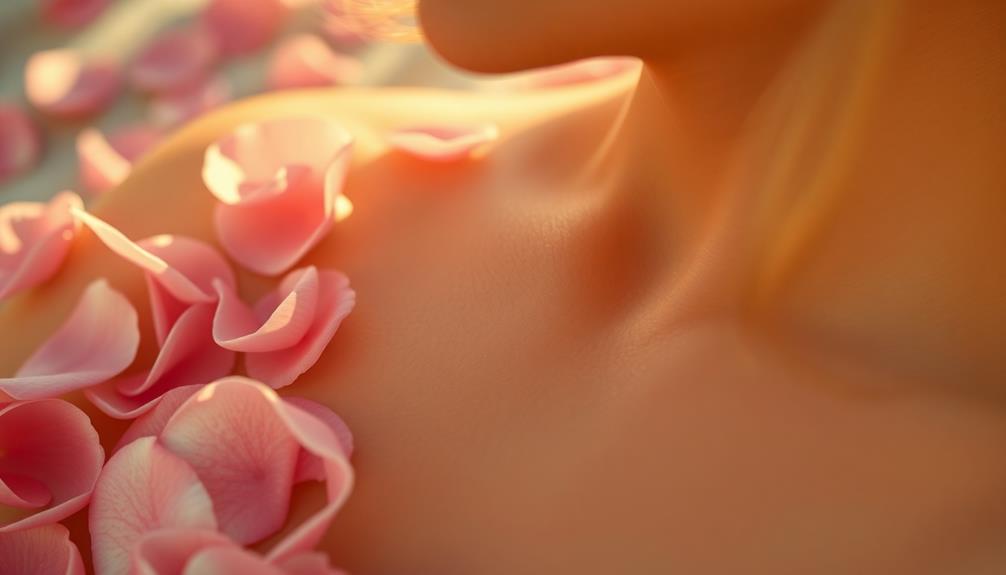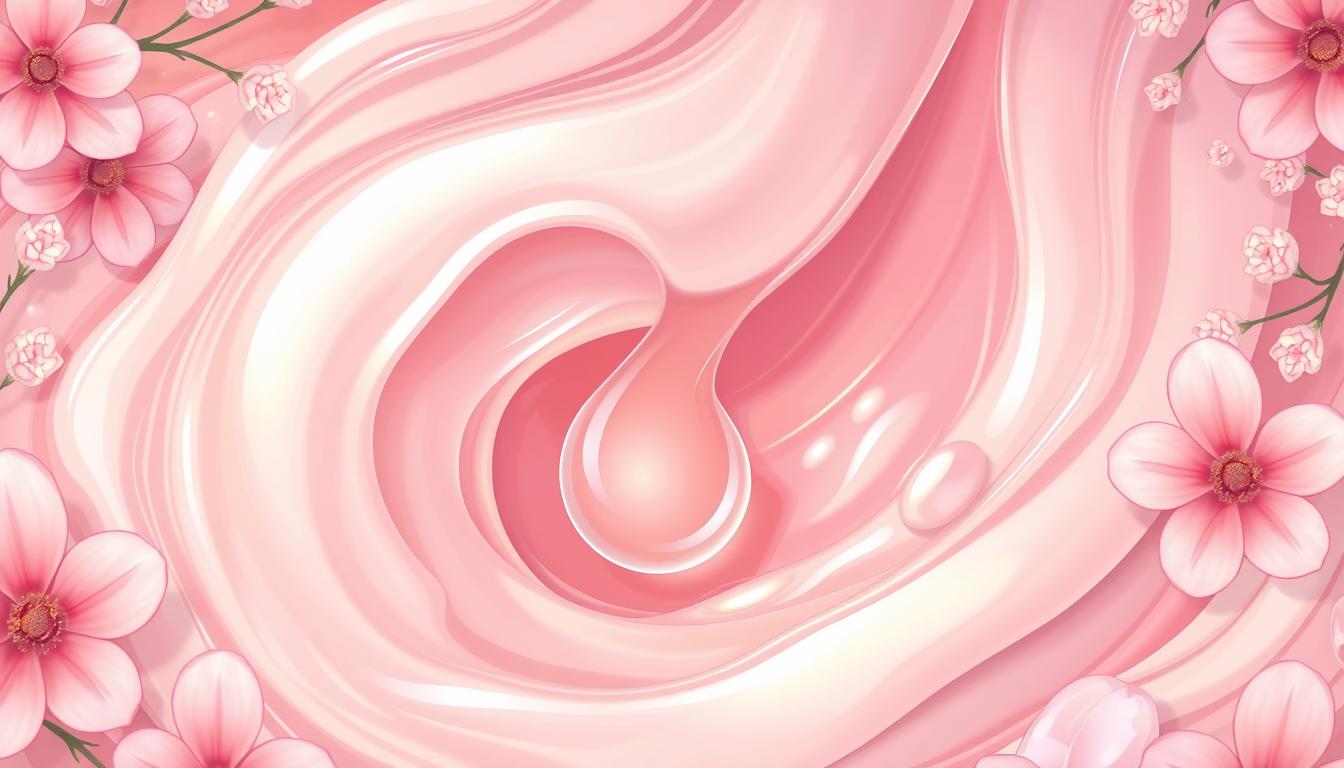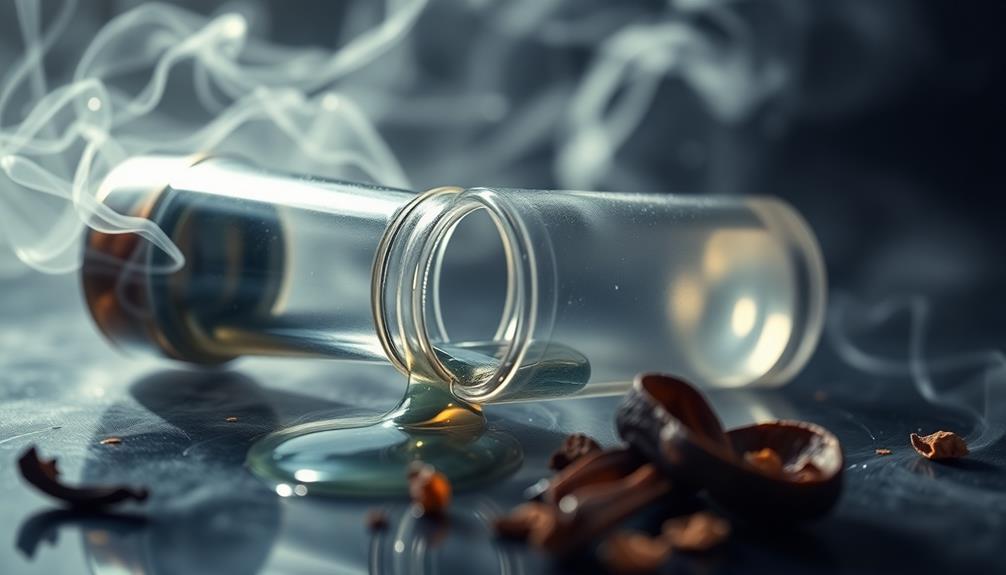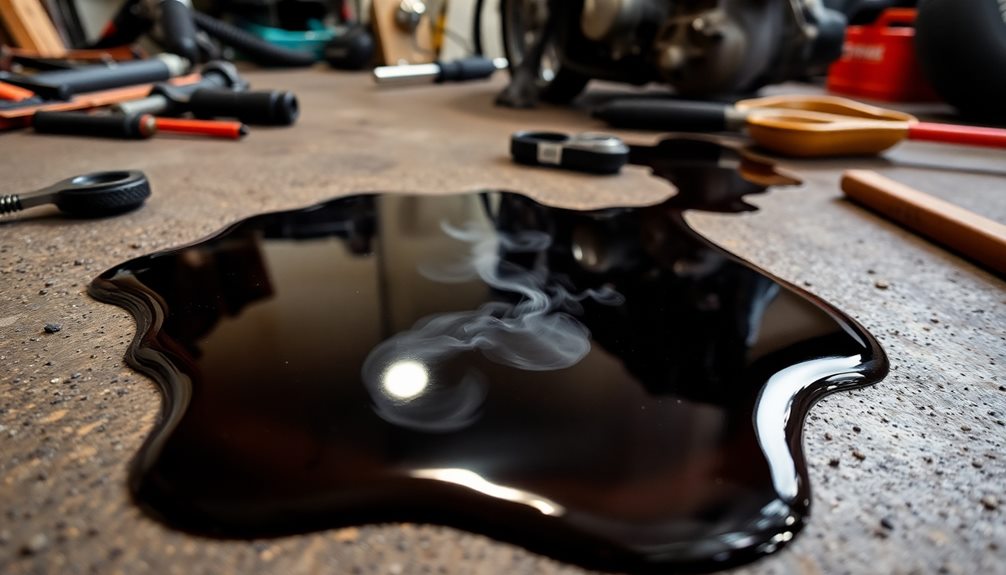Glossier You smells warm and inviting, making it feel like it was made just for you! The fragrance unfolds over time, with notes of pink pepper, iris, and ambrette seeds. You'll notice hints of clean jasmine and earthy vetiver that keep things fresh. As it mixes with your skin, you'll experience a cozy, comforting vibe, perfect for any occasion. It's versatile enough for brunches or romantic dinners, and it sparks compliments from friends, boosting your confidence. Overall, it's a unique scent journey that resonates with your individuality, and there's so much more to discover about this delightful fragrance!
Key Takeaways
- Glossier You features a unique scent profile that evolves with body chemistry, offering a personal fragrance experience.
- Key notes include pink pepper, iris, ambrette seeds, and Ambrox, creating a soft and intriguing aroma.
- The fragrance has earthy, floral, and musk characteristics, evoking feelings of cleanliness and comfort.
- It's versatile for various occasions, from casual outings to romantic dinners, and complements different vibes.
- Formulated to be cruelty-free and vegan, it adheres to health regulations and is suitable for a wide audience.
Introduction

When you first encounter Glossier You, you might be curious about its unique scent profile. This fragrance isn't just any perfume; it's designed to be your signature scent, evolving with your body chemistry.
You'll notice key notes of pink pepper, iris, ambrette seeds, and ambrox, which combine to create a warm and familiar aroma. It's soft yet intriguing, leaning neither too floral nor too sweet, which makes it appealing to a wide range of tastes.
What sets Glossier You apart is how it smells different on everyone. As you wear it, the scent may change, reflecting your individual body chemistry. Many people also detect hints of jasmine and vetiver, giving it a clean, fresh feel that reminds you of stepping out of a shower.
The woody base notes provide a comforting, lived-in vibe, making you feel at home in your own skin.
In short, Glossier You is more than just a fragrance; it's a personal experience. So, if you're looking for something that feels uniquely you, this scent might just be your perfect match!
Description of the Smell
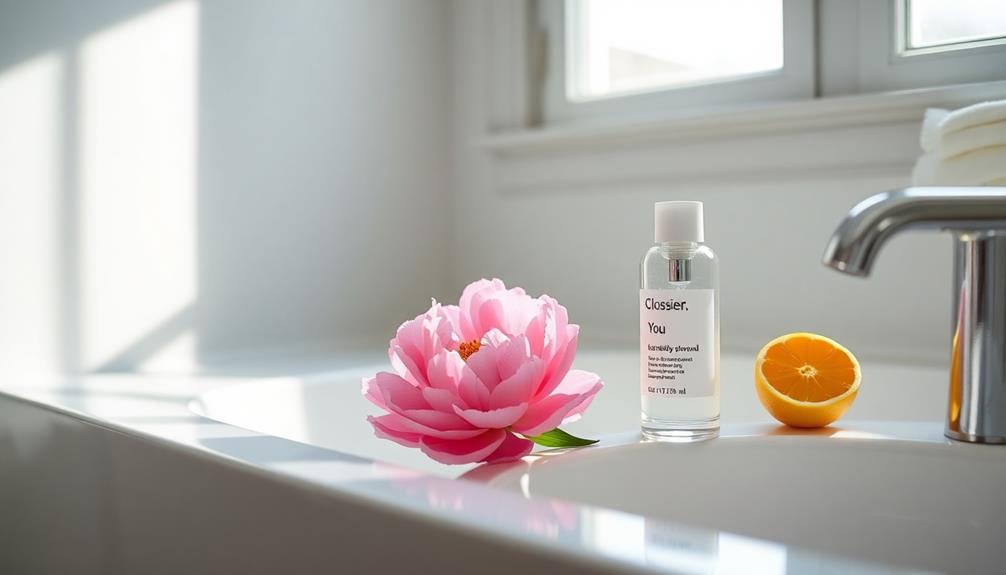
Glossier You offers a distinctive scent that unfolds beautifully over time, showcasing a unique blend of key notes like pink pepper, earthy iris, ambrette seeds, and Ambrox. This combination creates a soft and warm fragrance that feels both inviting and familiar.
As you wear it, you might notice how the scent transforms, revealing hints of jasmine and vetiver after some time. This subtle shift creates an intriguing contrast between the initial bright notes and the earthy undertones that slowly emerge. It’s a complex fragrance, evoking both warmth and freshness, though some might find certain elements reminiscent of what mouse urine smells like—a sharp, musky accent that can surprise the senses. Yet, this complexity is part of its allure, keeping you intrigued with every wear.
What's exciting about Glossier You is how it interacts with your body chemistry, making it the ultimate personal fragrance for everyone. Each person experiences a unique scent journey, which means it can smell slightly different on you than on someone else.
You won't find sharp top notes here; instead, the scent is subtle and not overly floral, sweet, or fruity. Many people describe it as a cozy aroma that reminds them of the freshness of post-shower soap.
This crowd-pleasing scent evokes feelings of cleanliness and comfort, making it perfect for any occasion. Whether you're heading out for a day of fun or just relaxing at home, Glossier You wraps you in warmth and familiarity, ensuring you feel your best.
Source and Composition
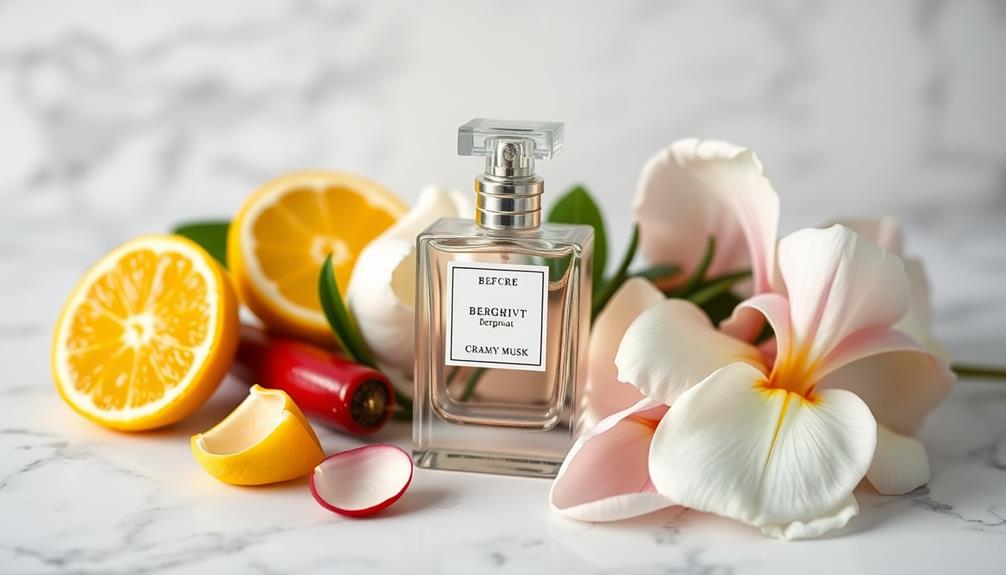
Exploring the source and composition of Glossier You reveals a carefully curated blend of ingredients that contribute to its unique scent profile. This eau de parfum features key notes like pink pepper, iris, ambrette seeds, and Ambrox, which work together to create a warm and inviting fragrance.
You'll notice that Glossier You lacks sharp top notes, making it gentle and easy to wear. Instead, it emphasizes earthy, floral, and musk characteristics, which makes it appealing to everyone. The fragrance adapts to your skin chemistry, meaning it smells a bit different on each person, enhancing that personal touch.
As it evolves throughout the day, the woody base notes of ambrette and Ambrox grow stronger, giving you a warm and matured essence. This unique composition helps evoke a sense of comfort, making it perfect for various occasions.
Whether you're going to a party or just hanging out with friends, Glossier You can serve as your signature scent.
With its thoughtful blend of ingredients, this fragrance is designed to make you feel special and memorable. So, why not give it a try and see how it transforms on you?
Typical Scenarios or Environments

There's something about Glossier You that makes it perfect for a range of scenarios, whether you're heading to a casual brunch with friends or dressing up for a romantic dinner. This versatile scent adapts beautifully to different environments.
You can wear it during an afternoon picnic or at a cozy indoor gathering, thanks to its soft, warm, and familiar fragrance profile. The subtle blend of pink pepper and iris ensures that it's not overpowering, making it great for both relaxed outings and professional settings.
You might find yourself receiving compliments at a casual meet-up or a special date night, as Glossier You enhances your unique skin scent. In transitional seasons, its warm and slightly spicy notes work well outdoors, perfect for those cooler days.
Whether you're enjoying beauty content or simply hanging out, this fragrance complements your vibe effortlessly.
Emotional or Cultural Associations

The warmth and familiarity of Glossier You create a comforting aura that many wearers cherish. This scent isn't just a fragrance; it's a personal signature scent that connects deeply with your emotions. When you wear it, you might feel like you're wrapped in a cozy blanket, bringing a sense of security and joy.
Glossier You adapts to your body chemistry, enhancing those emotional connections. It feels like a second skin, making it truly yours. Many people find that this fragrance sparks compliments from friends, which boosts your confidence and strengthens social bonds.
The versatility of Glossier You means it appeals to a wide range of individuals, making it a go-to choice for various occasions. Culturally, Glossier You fits perfectly into today's modern, minimalist aesthetic. It aligns with values of self-expression and individuality that many of us hold dear.
Wearing it can feel like a celebration of who you are, and that's part of its charm. So, as you spritz on this delightful scent, remember that it's more than just a fragrance; it's a connection to your emotions and a reflection of your unique style.
Health or Safety Considerations
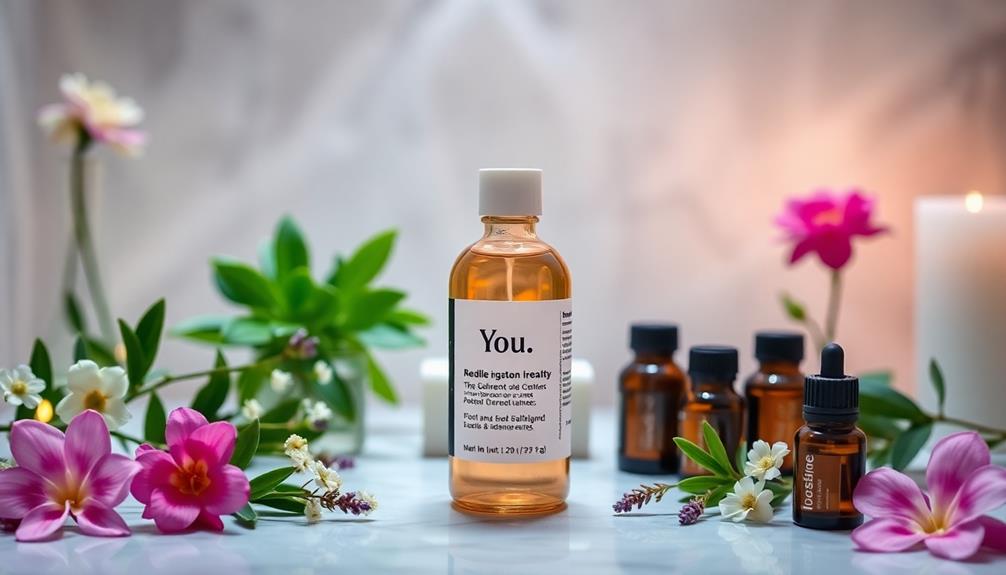
How safe is Glossier You for everyday wear?
You'll be pleased to know that Glossier You is formulated without banned ingredients, following current health regulations to keep you safe. It's cruelty-free and vegan, which means it's made with care for both animals and the environment. This is great news for your health and for the planet!
However, be aware that the fragrance does contain common allergens like Hydroxycitronellal and Limonene. If you have sensitive skin or allergies, these ingredients might cause reactions, so it's smart to do a patch test before using it widely. This simple step can help you find out if you have any sensitivities, keeping your skin healthy and happy.
Glossier is committed to responsibly sourcing its ingredients, which emphasizes both consumer safety and environmental health.
This means you can enjoy your favorite scent while also feeling good about your choices. Remember, keeping an eye on allergens is key, especially if you're prone to reactions.
With a little caution and care, you can safely enjoy Glossier You every day!
Final Thoughts
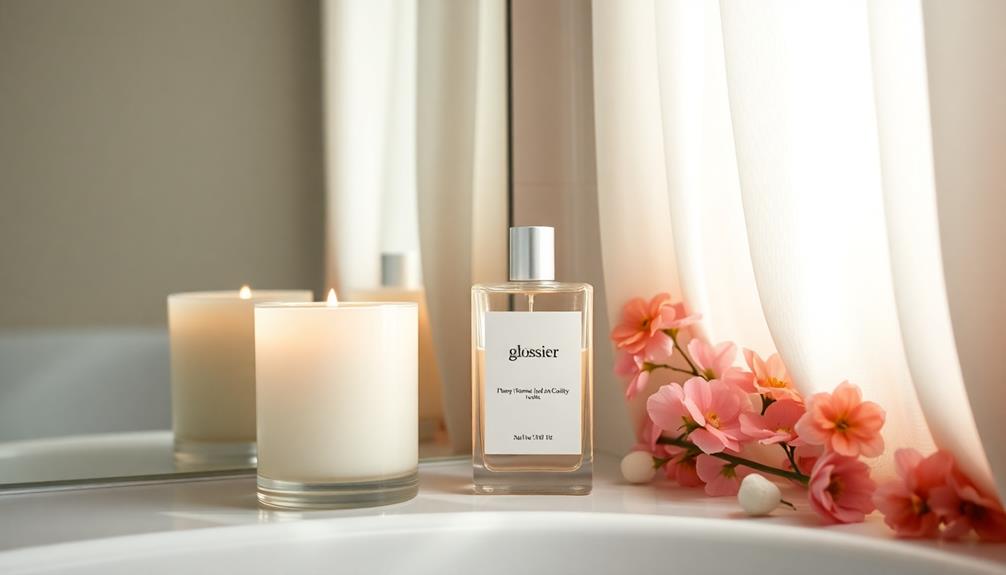
Ultimately, Glossier You offers a captivating fragrance experience that feels personal and inviting. If you're looking for a scent that evolves with you, this might be just what you need. With notes of pink pepper, iris, ambrette seeds, and Ambrox, it creates a warm and cozy aroma.
In your final thoughts, remember that this fragrance is different on everyone. Many users appreciate how it balances between masculine and feminine scents, making it a crowd-pleaser.
The soft and familiar profile is perfect for all seasons, reminding you of that fresh feeling after a shower. Its woody base notes mature over time, adding a comforting touch that you'll love.
Plus, you can wear it anytime, whether you're heading to school, work, or a fun outing. It's easy to apply and fits seamlessly into your daily routine.
Frequently Asked Questions
What Is Glossier You Smell Like?
When you experience Glossier You, you'll notice its warm, soft scent that adapts to your unique chemistry. It blends subtle floral notes with earthy undertones, creating an approachable aroma that's comforting and familiar on your skin.
What Does the Thumbprint on Glossier You Mean?
The thumbprint on Glossier You represents your individuality. It emphasizes that the fragrance evolves uniquely with your skin chemistry, inviting you to embrace your personal expression and connect intimately with the scent that's distinctly yours.
What Is the Most Attractive Scent to Smell Like?
The most attractive scent for you blends warm, musky notes with subtle floral or fruity hints. It should resonate with your identity, adapting to your skin chemistry to create a unique, inviting fragrance experience that captivates others.
What Does Beeswax Smell Like in Perfume?
Beeswax in perfume gives off a warm, sweet aroma, like honeycomb. You'll notice its creamy, slightly floral scent with earthy undertones, anchoring lighter notes and adding depth, creating a comforting, rich fragrance experience.
